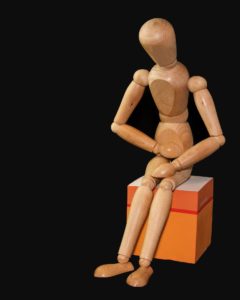By Jackie Manning, ARNP, Strive! Health and Rehabilitation
While we all love a good laugh, for someone with pelvic floor disorder, a simple chuckle can lead to an embarrassing moment!
Pelvic floor disorders can not only cause pain but can also cause symptoms like urine leakage and constipation—symptoms that can lead to embarrassing and debilitating limitations in daily life. Often people who are experiencing these symptoms, are too embarrassed by these issues to seek help. Sometimes, they simply don’t know where to seek help.
Many people are not aware of the benefits of physical therapy treatments for pelvic floor disorders. PT is not only highly effective, but is also supported by large bodies of research on the proven benefits. Oftentimes, PT negates the need for medication or surgery.
WHAT IS THE PELVIC FLOOR?
The pelvic floor consists of skin, muscles, ligaments, connective tissue, nerves, blood vessels, and organs in the pelvis. With the job of supporting the body, the pelvic floor stabilizes the pelvic girdle and spine and supports the bladder, rectum and pelvic organs. It’s important to know that pelvic floor disorders affect both men and women of all ages.
BLADDER CONTROL PROBLEMS
You might have never guessed that you’d be having bladder control issues decades after potty training. Yet, an estimated 35% of all women (50% above the age of 65) and 25% of all men have some form of bladder control problems. Let’s look at the different types.
Urinary incontinence-unintentional urine leakage of any amount, at any time.
Urinary urgency-a sudden strong urge to urinate that is difficult to defer.
Urinary frequency-urinating more than 8 times in 24 hours.
Nocturia-waking more than once during sleep by the need to urinate.
Difficulty emptying the bladder-incomplete bladder emptying, slow stream.
Pelvic organ prolapse-“dropped bladder” or cystocele, uterine prolapse.
The good news is that approximately 80% of urinary incontinence issues can be cured or improved!
BOWEL CONTROL PROBLEMS
Constipation/obstructed defecation-difficulty emptying the bowels, incomplete bowel emptying, need to strain.
Fecal incontinence-unintentional leakage or smearing of any amount of stool at any time.
Fecal urgency-difficulty or inability to defer the urge to have a bowel movement.
Pelvic organ prolapse-rectocele.
Painful abdominal scars-abdominal nerve entrapments, trigger points.
Painful/limited vaginal penetration in women-dyspareunia, difficulty with gynecological exams, post radiation narrowing of the vaginal canal.
Sexual Pain-pain during arousal, during or after intercourse, or after climax.
Postpartum perineal pain-pain from perineal injury or episiotomy sustained during vaginal delivery.
Cocydynia-tailbone pain
OTHER GENERAL PELVIC PAIN TERMS
Pelvic pain
Bladder pain
Bowel movement pain
Abdominal pain
Prostatitis
Post-prostatectomy
Post-radiation rehabilitation.
PREGNANCY RELATED PROBLEMS
Roughly 35-70% of women who go through pregnancy, deal with some type of pelvic floor disorder. Some estimates show that 35% of new mothers experience urinary incontinence following childbirth, and 20% of first-time mothers experience severe pelvic floor muscle injury after a normal pregnancy and delivery.
WHAT TO DO
At Strive, we realize that the physical therapy treatment of pelvic floor disorders is highly specialized, requiring physical therapists with advanced education and training. Contact us today, and one of our advanced and highly trained therapists will help you get back to laughing and enjoying your life.
References:
Bodner-Adler, B., Kimberger, O., Laml, T., Halpern, K., Beitl, C., Umek, W., & Bodner, K. (2019). Prevalence and risk factors for pelvic floor disorders during early and late pregnancy in a cohort of Austrian women. Archives of gynecology and obstetrics, 300(5), 1325–1330. https://doi.org/10.1007/s00404-019-05311-9.
Handa, V. (2020). Effect of pregnancy and childbirth on urinary incontinence and pelvic organ prolapse. Obstet Gynecol, 1225-1230.




